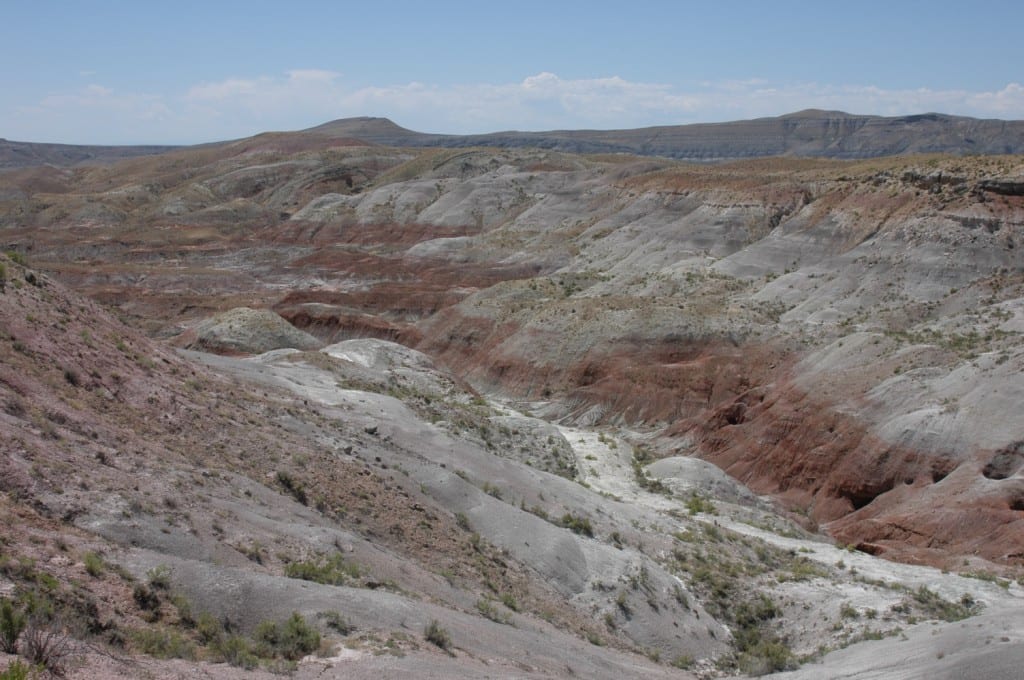The Guardian reporter David Hambling covered the research of SMU paleontologist Timothy S. Myers in the London newspaper’s daily Weatherwatch column.
Myers’ recent research has focused on the climate of the Jurassic, testing the notion that the era’s ancient climate was similar to modern. His most recent study found that climate was more variable than previously understood in the area now covered by the Morrison Formation, a massive and prolific fossil bearing formation that runs throughout a large portion of the western United States.
Hambling wrote about the research in his Dec. 10 Weatherwatch column, “Climate of Jurassic era just as much a patchwork as today.”
Prior to this study, a previous one set out to discover whether the modern relationship between lush environments and a proliferation of animal life held true 150 million years ago during the Late Jurassic when dinosaurs roamed the Earth.

Myers’ uses geochemical analysis of ancient soil, called paleosols, to unearth climate data from the Jurassic.
His findings suggest that scientists must use different approaches to quantify paleoclimate, he said.
“It’s not enough to just look at soil types and draw conclusions about the paleoclimate,” Myers said. “It’s not even enough to look at rainfall in this quantitative fashion. There are numerous factors to consider.”
Myers analyzed 22 paleosol samples from northern New Mexico, 15 from northern Wyoming and seven from southern Montana.
The samples from Montana were younger than those from New Mexico, but roughly contemporary with the samples from Wyoming.
Myers is a postdoctoral scholar in SMU’s Shuler Museum of Paleontology in the Roy M. Huffington Department of Earth Sciences, Dedman College.



“We found that, indeed, New Mexico was relatively arid,” Myers said. “But the surprising part was that the Wyoming locality was more arid and had less rainfall than New Mexico, even though it was at a higher latitude, and above the mid-latitude arid belt. And the Montana locality, which is not far from the Wyoming locality, had the highest rainfall of all three. And there’s a very abrupt transition between the two.”
He reported his findings, “Multiproxy approach reveals evidence of highly variable paleoprecipitation in the Upper Jurassic Morrison Formation (western United States),” in The Geological Society of America Bulletin.
Co-authors of the study were Neil J. Tabor, SMU earth sciences professor and an expert in ancient soil, and Nicholas Rosenau, a stable isotope geochemist, Dolan Integration Group.
EXCERPT:
By David Hambling
The Guardian
We need to understand the conditions of earlier eras to make sense of climate change data. But past conditions were complex; the Jurassic world was, after all, not an unbroken vista of volcanoes and steamy jungle.Timothy Myers, a palaeontologist at the Southern Methodist University in Dallas, collected 44 samples of ancient soils, or paleosols, from parts of the Morrison formation in the US south-west.
Researchers may assume that soil type gives a good indication of the prevailing climate. The reasoning, here, was that New Mexico, as today, would have been more arid than Wyoming and Montana further to the north.
Yet when Myers did the first detailed quantitative study, he found that mean average rainfall was 76cm (30in) for New Mexico and 114cm (45in) for north Montana, while being just 51cm (20in) in northern Wyoming.
There were big differences even between adjacent sites. “The apparently sudden shift from dry to relatively wet environments over such a short distance was perplexing,” said Myers. Normally this sort of pattern would only occur on opposite sides of a topographic feature, such as a mountain range.
Myers suggested that precipitation could have been highly seasonal at the Wyoming site, and this could have distorted the estimate for the total rainfall.
Follow SMUResearch.com on twitter at @smuresearch.
SMU is a nationally ranked private university in Dallas founded 100 years ago. Today, SMU enrolls nearly 11,000 students who benefit from the academic opportunities and international reach of seven degree-granting schools. For more information see www.smu.edu.
SMU has an uplink facility located on campus for live TV, radio, or online interviews. To speak with an SMU expert or book an SMU guest in the studio, call SMU News & Communications at 214-768-7650.

